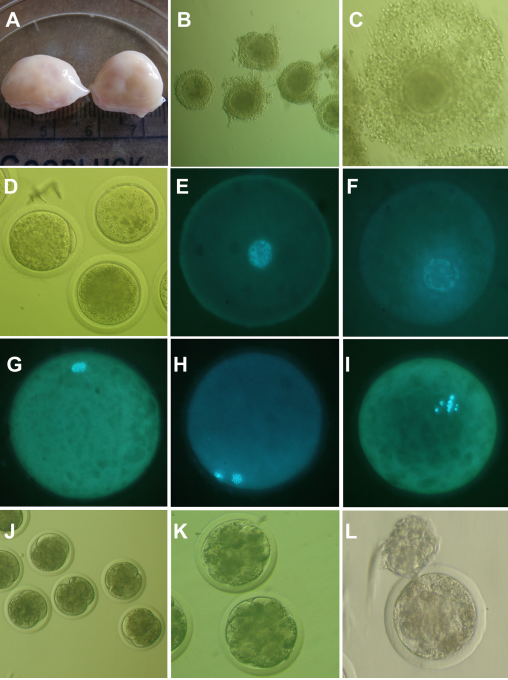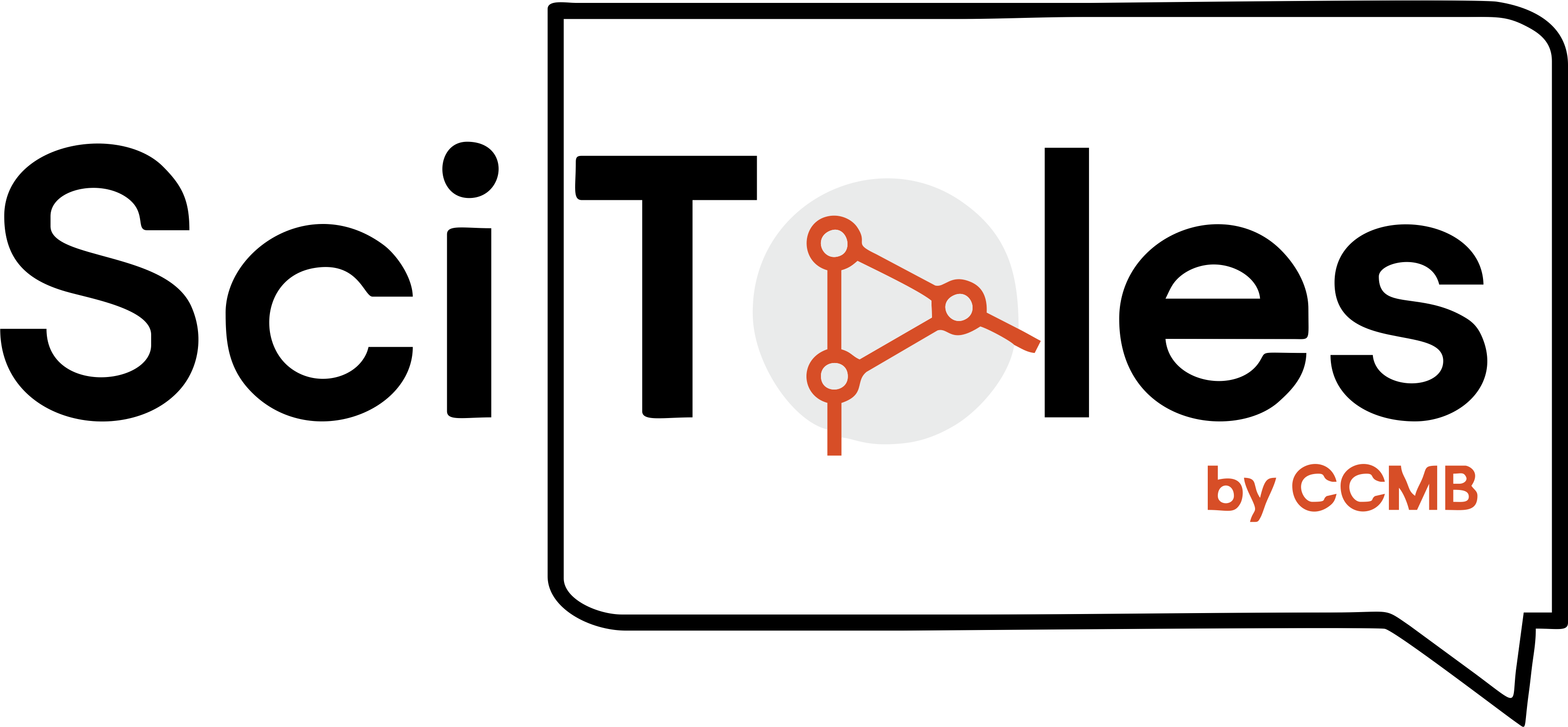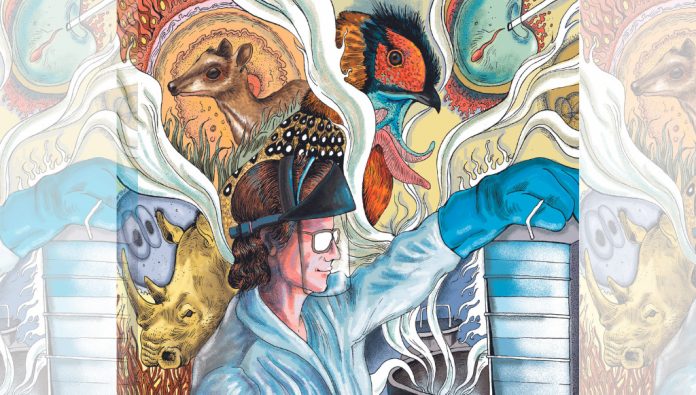PC: Cover art of An Introduction to Wildlife Genetic Resource Banks for Wildlife Conservation by Central Zoo Authority of India, MoEFCC and CSIR-CCMB, art by Argha Manna
Bible says, Noah built a ship in the face of a massive flood to protect a pair of each species on earth, and his family. Once the land dried, he released all the animals, and they lived and multiplied.
Scientists, not so long ago, in 1950s, started studies to turn this into reality. They began figuring out how to preserve cells and tissues at extremely low temperatures for years. Preservation of biological samples at temperatures as low as -196oC is called cryo-preservation.
And, now, here I am, in 2023, at the National Wildlife Genetic Resource Bank at Laboratory for Conservation of Endangered Species (LaCONES) in CSIR-CCMB, Hyderabad. This is the only bioreserve bank in India, along with 21 other such banks all across the globe. This is where scientists use the cryo-preservation technique to store biological samples from dead and live animals, including humans.

————————————————————————————————————————-
The primary role of a typical bioreserve bank is in wildlife conservation by preserving the gametes (sperm or egg cells) of dead or live animals as well as embryos. Generally, samples are provided by zoo keepers and guards from forest department. An enthusiastic citizen can also provide the sample, with a specific purpose, only after gaining knowledge on how to collect and handle the sample, or else with an expert’s help.
Other than this, bioreserve banks are used in fertility centres and sperm banks to preserve the gametes and to aid in in vitro fertilization. Such centres aid in assisted reproduction of livestock in the livestock industry and for humans.
The gametes are the cells in our body which are responsible for the birth of our offspring. The two types of gametes are the sperm – the male gamete and the oocyte – the female gamete. Upon union of male gamete and the female gamete, a zygote is formed. It grows into an embryo, and then into a foetus, and finally in a fully developed individual.
When any of these steps cannot happen naturally, assisted reproduction can be done. Cryo-preservation comes in handy here by providing pre-stored gametes or embryos. The gametes, which can be matured and fertilized as needed, or the preserved embryos can be transplanted into a surrogate.
————————————————————————————————————————-
At LaCONES, I am in discussion with Dr Samba Siva Rao, who has been taking care of tissue, gamete, and genetic material (DNA and RNA) preservation in the bioreserve bank here since 2004.
The first tissue collected and preserved at LaCONES was from the ear and skin graft of a dead black buck and these are called primary fibroblasts. Incidentally, the first gametes (oocytes) were also collected from another dead female black buck. Since then, the LaCONES team has collected and safely preserved the oocytes of cats and other mammalian species. In 2004, they also received oocytes from a living wild buck in Chattisgarh.
However, generally, the oocytes are collected from a dead female. The cause of death in most cases is old age, and sometimes a road kill. So, the animal is already reproductively mature or in post-reproductive age. Oocytes collected from these animals are cryo-preserved and when needed, with the availability of freshly collected or frozen sperms, they are thawed and fertilized.
Sometimes, a pre-pubescent animal can also be a donor of the oocytes. In such scenarios, maturation of oocytes in essential, which can be done first and then the mature oocytes are cryo-preserved. Maturing the oocytes outside the animal before cooling them allows for complete and safe maturation of gametes. However, arguably preserving and then maturing the gametes at later stage may pose some problems like development of spindle fibres during the cell division process in the gametes.

But, collection of oocytes is not a walk in the park. The major problem in collecting oocytes, especially from a dead animal, is the delay between the death of the animal and identifying it to be dead by the forest officials or the zoo keepers. Once identified as dead, the animal must be kept at cooler temperatures of at least 4oC. Lack of infrastructure in the animal habitats and ignorance of the keepers cause delays in preserving the dead animal. This causes the internal organs to damage and oocyte quality drops, and, with that the outcome of the biobank too.

Also, a biobank focuses on preserving the gametes and embryos for years. But the only quality assessment conducted on these gametes is based on the morphological features and membrane integrity of these cells. With the biotechnology available, one can also focus on assessing the quality of these gametes at molecular level prior to their preservation. This will ensure storing healthy gametes, fit for their purpose.
To address these problems, Dr Rao says active involvement of forest guards and zoos, and improved infrastructure at zoo for cold preserving of dead animals and organs are much needed. He also emphasizes on the importance of having remote bioreserve centres near the zoos for faster transport and more timely preservation. These require multiple stakeholders to come together. Towards this cause, a consortium of zoos of India, Central Zoo Authority of India, and LaCONES-CCMB have signed a triparty MoU to negotiate and come up with better logistic and technical approaches to collect and preserve tissues in a much efficient way.
The conversations on bioreserve banks have only initiated in India. There is much to learn in and from the community to optimally utilize the possibilities that biotechnology is opening up in the wildlife conservation. And, LaCONES-CCMB is leading the way towards the Noah’s Ark of India.


